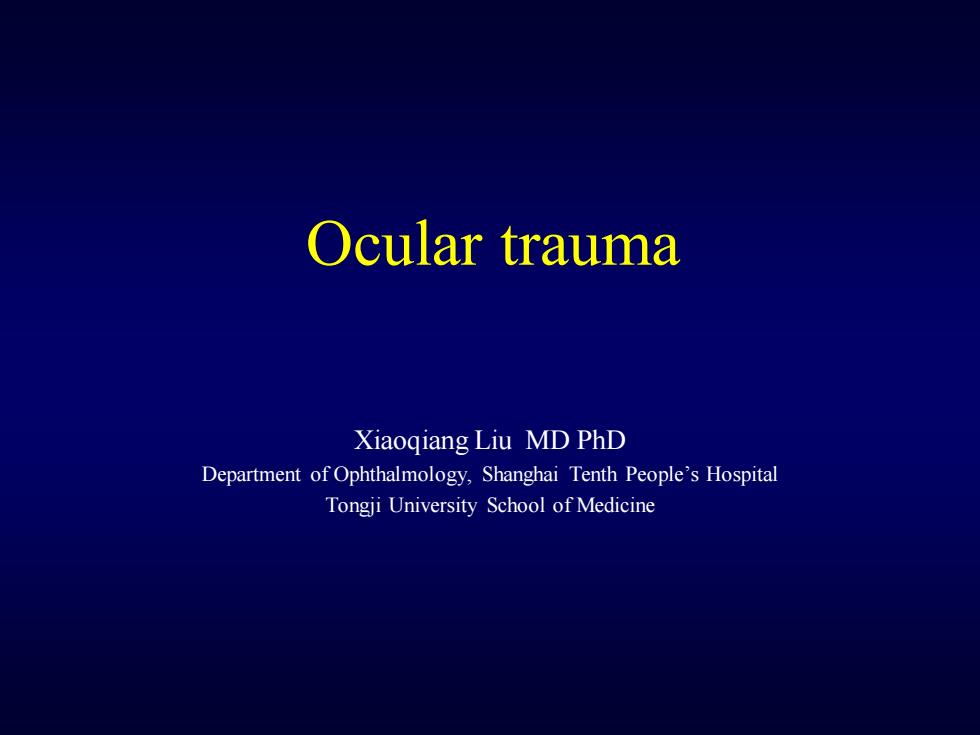
Ocular trauma Xiaogiang Liu MD PhD Department of Ophthalmology,Shanghai Tenth People's Hospital Tongji University School of Medicine
Ocular trauma Xiaoqiang Liu MD PhD Department of Ophthalmology, Shanghai Tenth People’s Hospital Tongji University School of Medicine
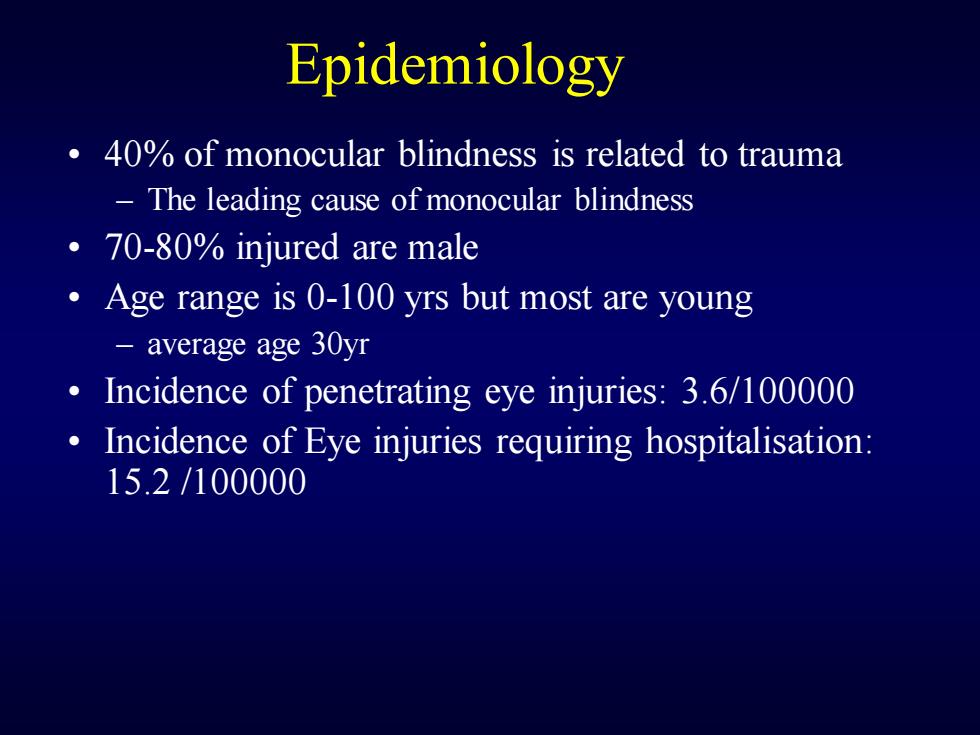
Epidemiology 40%of monocular blindness is related to trauma The leading cause of monocular blindness 70-80%injured are male Age range is 0-100 yrs but most are young average age 30yr Incidence of penetrating eye injuries:3.6/100000 。 Incidence of Eye injuries requiring hospitalisation: 15.2/100000
Epidemiology • 40% of monocular blindness is related to trauma – The leading cause of monocular blindness • 70-80% injured are male • Age range is 0-100 yrs but most are young – average age 30yr • Incidence of penetrating eye injuries: 3.6/100000 • Incidence of Eye injuries requiring hospitalisation: 15.2 /100000
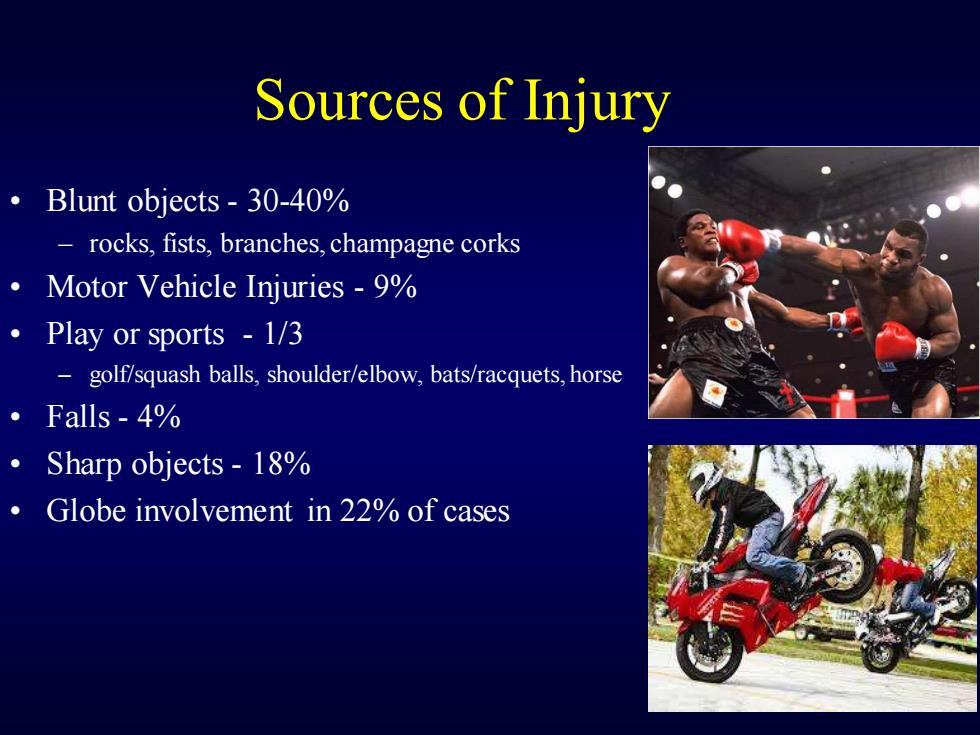
Sources of Injury Blunt objects-30-40% rocks,fists,branches,champagne corks Motor Vehicle Injuries-9% ·Play or sports-l/3 -golf/squash balls,shoulder/elbow,bats/racquets,horse ·Falls-4% ·Sharp objects-l8% Globe involvement in 22%of cases
Sources of Injury • Blunt objects - 30-40% – rocks, fists, branches, champagne corks • Motor Vehicle Injuries - 9% • Play or sports - 1/3 – golf/squash balls, shoulder/elbow, bats/racquets, horse • Falls - 4% • Sharp objects - 18% • Globe involvement in 22% of cases
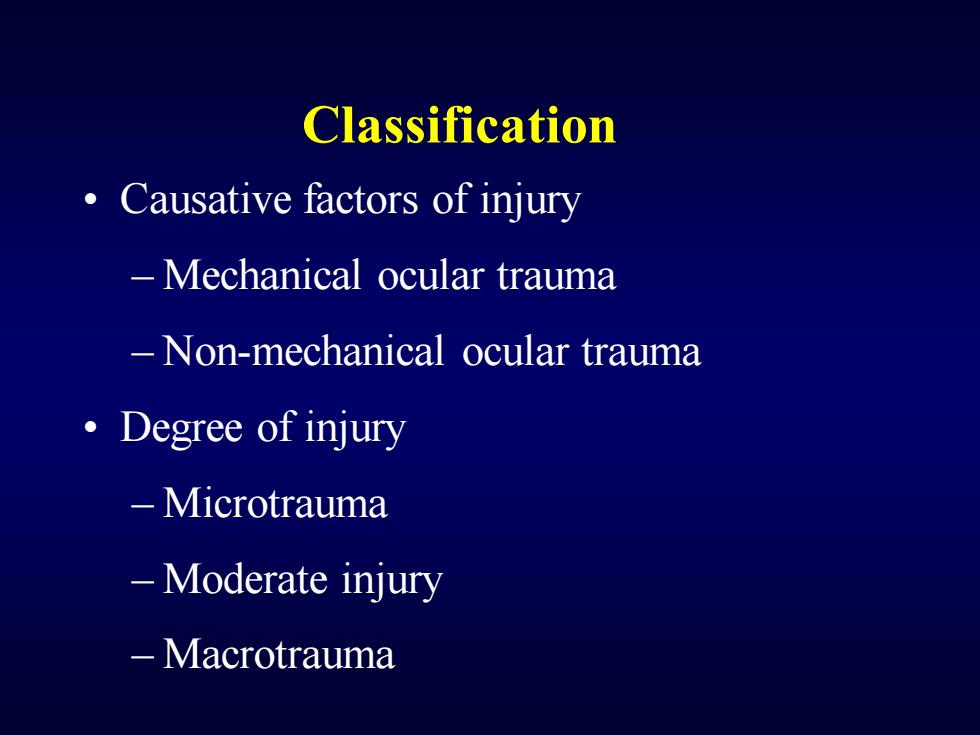
Classification Causative factors of injury -Mechanical ocular trauma -Non-mechanical ocular trauma 。Degree of injury -Microtrauma Moderate injury -Macrotrauma
Classification • Causative factors of injury – Mechanical ocular trauma – Non-mechanical ocular trauma • Degree of injury – Microtrauma – Moderate injury – Macrotrauma
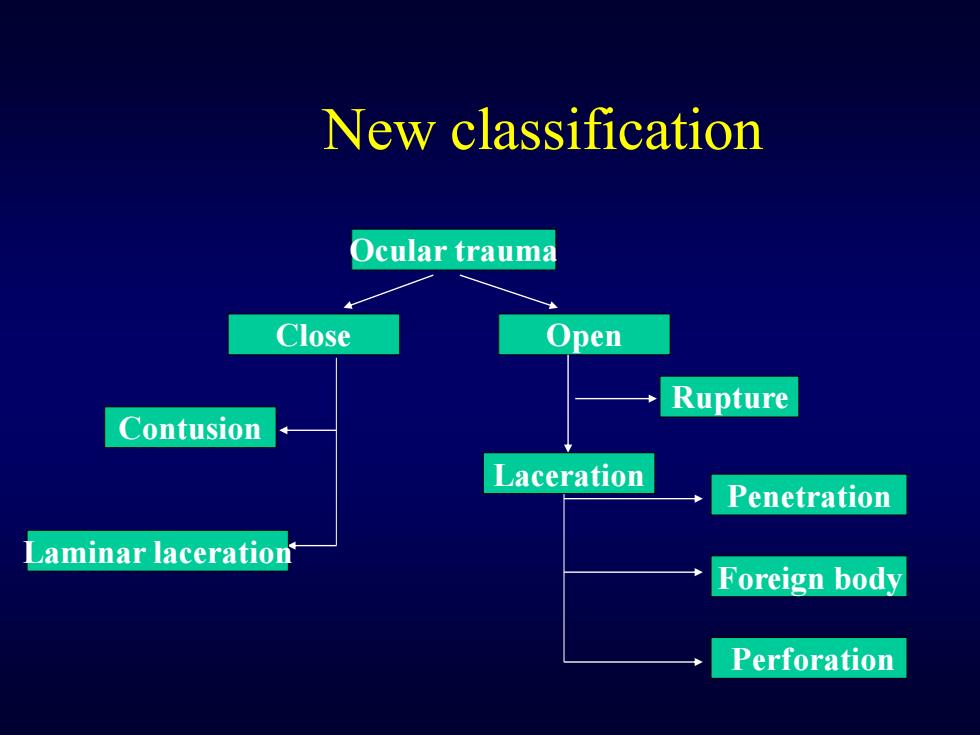
New classification Ocular trauma Close Open Rupture Contusion Laceration Penetration Laminar laceration Foreign body Perforation
New classification Ocular trauma Close Open Contusion Laminar laceration Rupture Penetration Foreign body Perforation Laceration